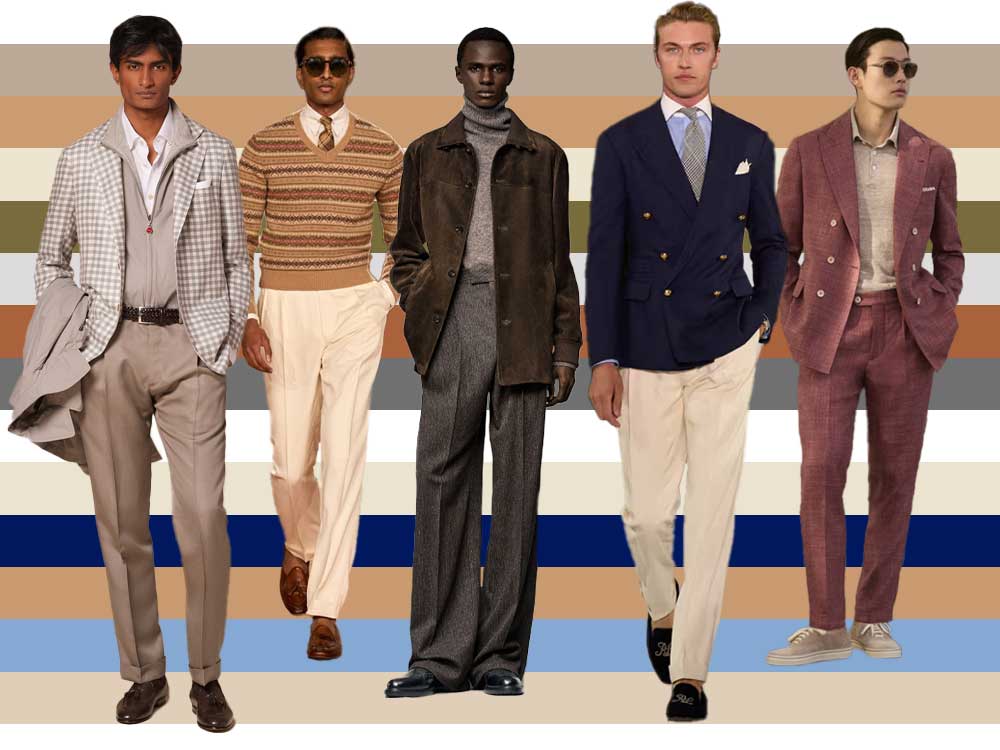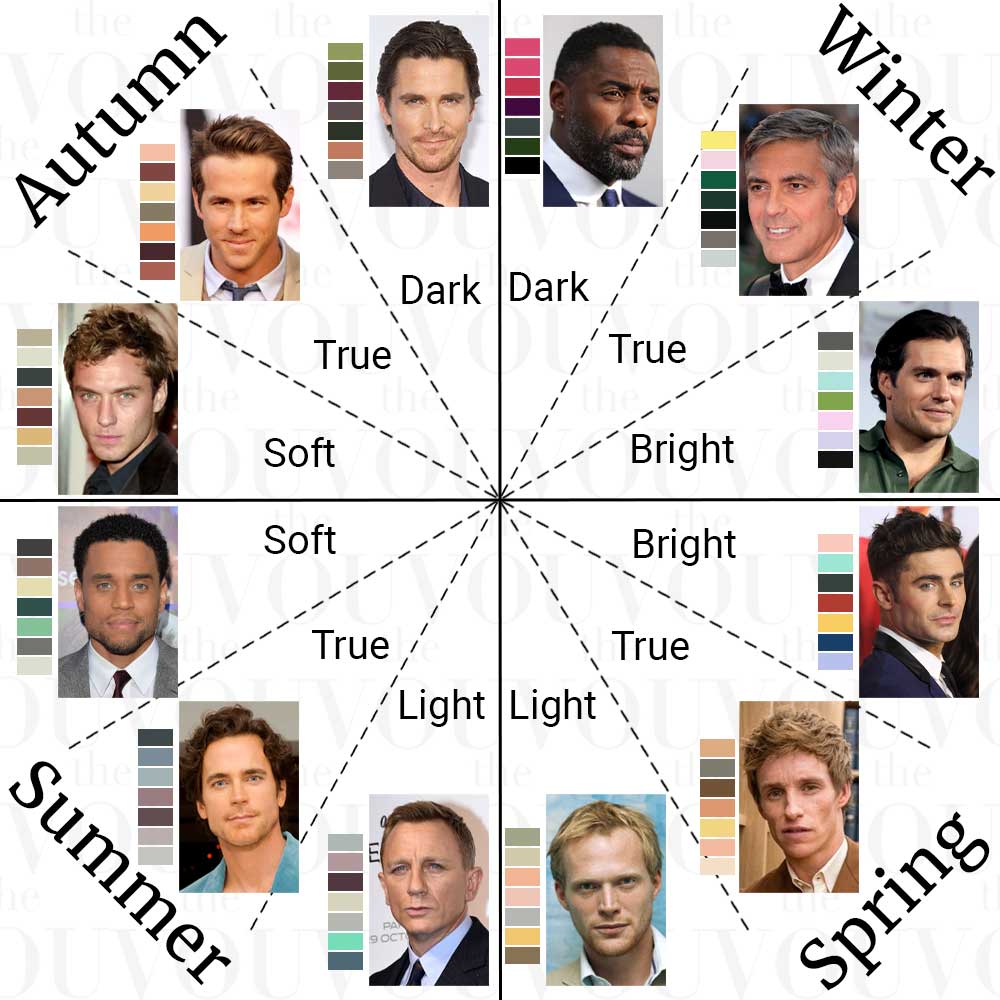The colours you wear are not an afterthought; they are a strategic component of your personal brand.
The right palette communicates authority, health, and a meticulous attention to detail. The wrong one can project fatigue and a lack of self-awareness.
Mastering your personal colour profile is a non-negotiable skill for the modern man. It is the silent language of first impressions, ensuring you command respect before a single word is spoken.
This guide provides a definitive system for identifying the colours that will amplify your presence and cement your aesthetic.
The Foundations of Colour Theory in Men’s Style

Effective personal style is built on systems, not guesswork. Colour theory provides the framework for understanding how hues interact with your natural colouring.
This is not about chasing trends. It is about building a versatile, powerful wardrobe where every piece works in your favour. The two core principles you must master are skin undertone and natural contrast.
Understanding Your Skin’s Undertone
Your skin tone is the surface colour you see; it can change with sun exposure or season.
Your undertone, however, is the permanent, subtle hue beneath the surface. It is the critical factor in determining your ideal colour palette.
Undertones fall into three distinct categories; cool (blue, pink, or red undertones), warm (yellow, peach, or golden undertones), and neutral (a balanced mix of cool and warm).
The Role of Contrast
Contrast refers to the degree of difference between your skin tone, hair colour, and eye colour.
Understanding your natural contrast level is essential for creating visual harmony in your outfits.
A man with black hair and fair skin has high contrast. A man with blond hair and fair skin has low contrast. This distinction will dictate the intensity of the colours and combinations you should employ.
A Practical Guide to Discovering Your Best Colours

Theory must be translated into action. Use these three precise tests to uncover your personal colour profile with certainty. Conduct them in natural daylight for the most accurate results.
The Vein Test: A Simple Undertone Indicator
Examine the veins on the inside of your wrist.
If your veins appear predominantly blue or purple, you have a cool undertone.
If they look green or olive, your undertone is warm. This is because you are seeing the blue vein through your skin’s natural yellow pigment.
If you cannot definitively tell whether they are blue or green, you likely have a neutral undertone.
The White Paper Test: Gauging Your Skin’s Reaction
Hold a sheet of pure white paper next to your clean, makeup-free face.
Compare how your skin looks against the stark white. If your skin takes on a pinkish or rosy cast, your undertone is cool.
If your complexion appears more yellow, sallow, or golden, your undertone is warm.
If you notice a greyish tone or see no discernible cast of either yellow or pink, you have a neutral undertone.
The Jewellery Method: Gold vs. Silver
Your skin’s reaction to precious metals is a final, decisive indicator.
Cool undertones are flattered by silver, platinum, and other white metals. They make the skin look bright and clear.
Warm undertones are enhanced by gold. It complements the natural golden or peachy hues in the skin.
If you can wear both gold and silver without one looking noticeably better than the other, you are a neutral undertone.
Translating Your Colour Profile into a Wardrobe Strategy
With your undertone identified, you can now build your wardrobe with surgical precision. This is about selecting colours that harmonise with your natural palette, making you look more vibrant and put-together.
Colours for the Cool-Toned Man

Men with cool undertones thrive in colours with a blue base.
Focus your wardrobe on a spectrum of blues, purples, and certain greens. Your key colours are; bright white, jewel tones like sapphire and emerald, deep purples like lavender, and blue-based reds such as cherry or ruby.
Avoid orange and bright yellow, as they will clash with your skin and create a sallow appearance.
Colours for the Warm-Toned Man

A warm undertone commands a palette of rich, earthy colours.
Your strength lies in shades that contain yellow or golden notes. Build your wardrobe with; off-whites and cream, earthy greens like olive and moss, browns, terracotta, mustard yellow, and burnt orange.
Steer clear of icy blues and jewel tones, which can make your skin appear washed out.
Colours for the Neutral-Toned Man

The neutral-toned man possesses the most versatile palette, as you sit at the intersection of cool and warm.
You can wear colours from across the spectrum. However, you look best in shades that are not overly saturated.
Instead of bright primary colours, opt for more subdued versions. Excellent choices include; dusty pink, jade green, cornsilk yellow, and lagoon blue. You have the freedom to experiment, but balance is key.
Mastering Contrast and Seasonal Palettes

Understanding your undertone is the foundation. The next level of mastery involves integrating contrast and exploring the more nuanced system of seasonal colour analysis.
Aligning Your Outfit with Your Natural Contrast
The contrast in your outfit should mirror the natural contrast in your features.
If you are high-contrast (e.g., dark hair, fair skin), wear high-contrast pairings. A black jacket with a crisp white shirt is a classic example that leverages your natural colouring.
If you are low-contrast (e.g., fair hair, fair skin), your best look is tonal or monochromatic. Wearing colours of a similar intensity creates a seamless, sophisticated harmony.
Medium-contrast individuals have more flexibility and can experiment with a wider range of pairings, but should avoid the most extreme high-contrast or low-contrast looks.
An Introduction to Seasonal Colour Analysis

Seasonal analysis is a more sophisticated system that combines both undertone and contrast.
It divides colour profiles into four categories; Winter (cool undertone, high contrast), Summer (cool undertone, low contrast), Autumn (warm undertone, low-to-medium contrast), and Spring (warm undertone, high contrast).
A Winter palette features bold, sharp colours like black, white, and royal blue. A Summer palette is softer, with muted pastels like sky blue and rose. Autumn thrives in rich, earthy tones like mustard and terracotta. Spring’s colours are clear and bright, like coral and lime green.
Identifying your season provides the most detailed and accurate guide to your personal best colours.
Final Considerations for the Discerning Gentleman
View these principles as a strategic framework, not a restrictive set of rules.
Begin by integrating a few key pieces in your most flattering colours; a navy blazer for the cool-toned man, an olive green field jacket for the warm-toned.
Pay attention to how these colours make you look and feel. The objective is to build an intuitive understanding of what works for you.
Mastering your colours is an investment in your personal brand. It is a subtle but powerful tool for projecting confidence, capability, and an unwavering commitment to excellence.
A passionate advocate for inclusivity and diversity, Aidan is the driving force behind The VOU as its Editorial Manager. With a unique blend of editorial acumen and project management prowess, Aidan's insightful articles have graced the pages of The Verge, WWD, Forbes, and WTVOX, reflecting his deep interest in the dynamic intersection of styling with grooming for men and beyond.


